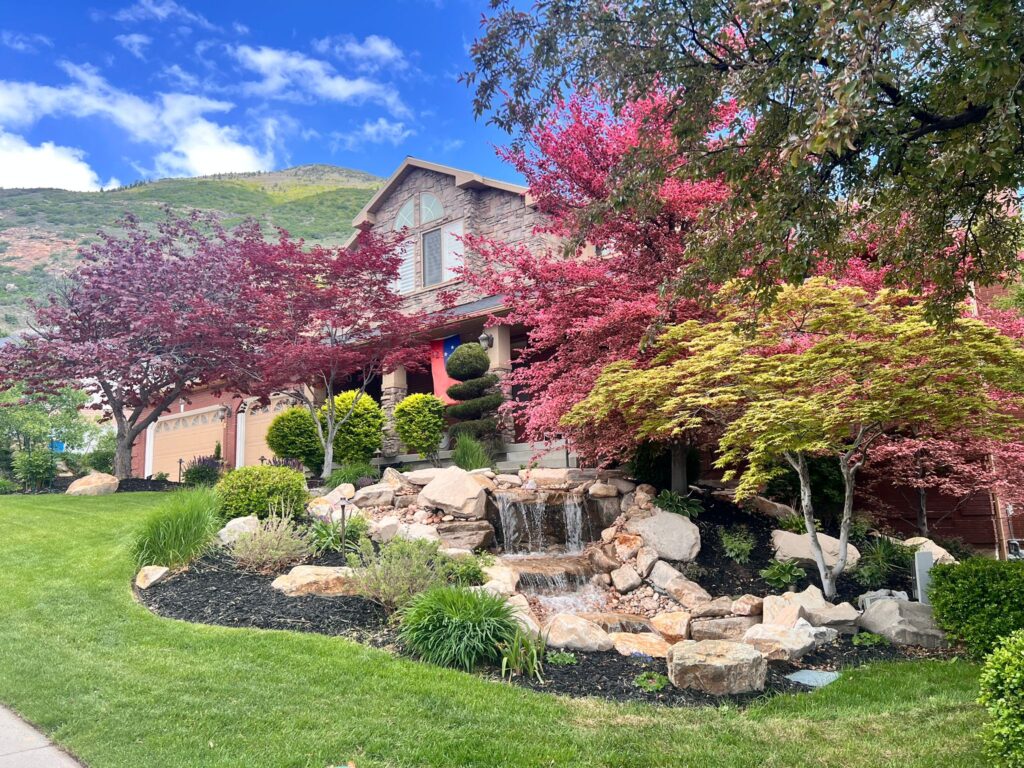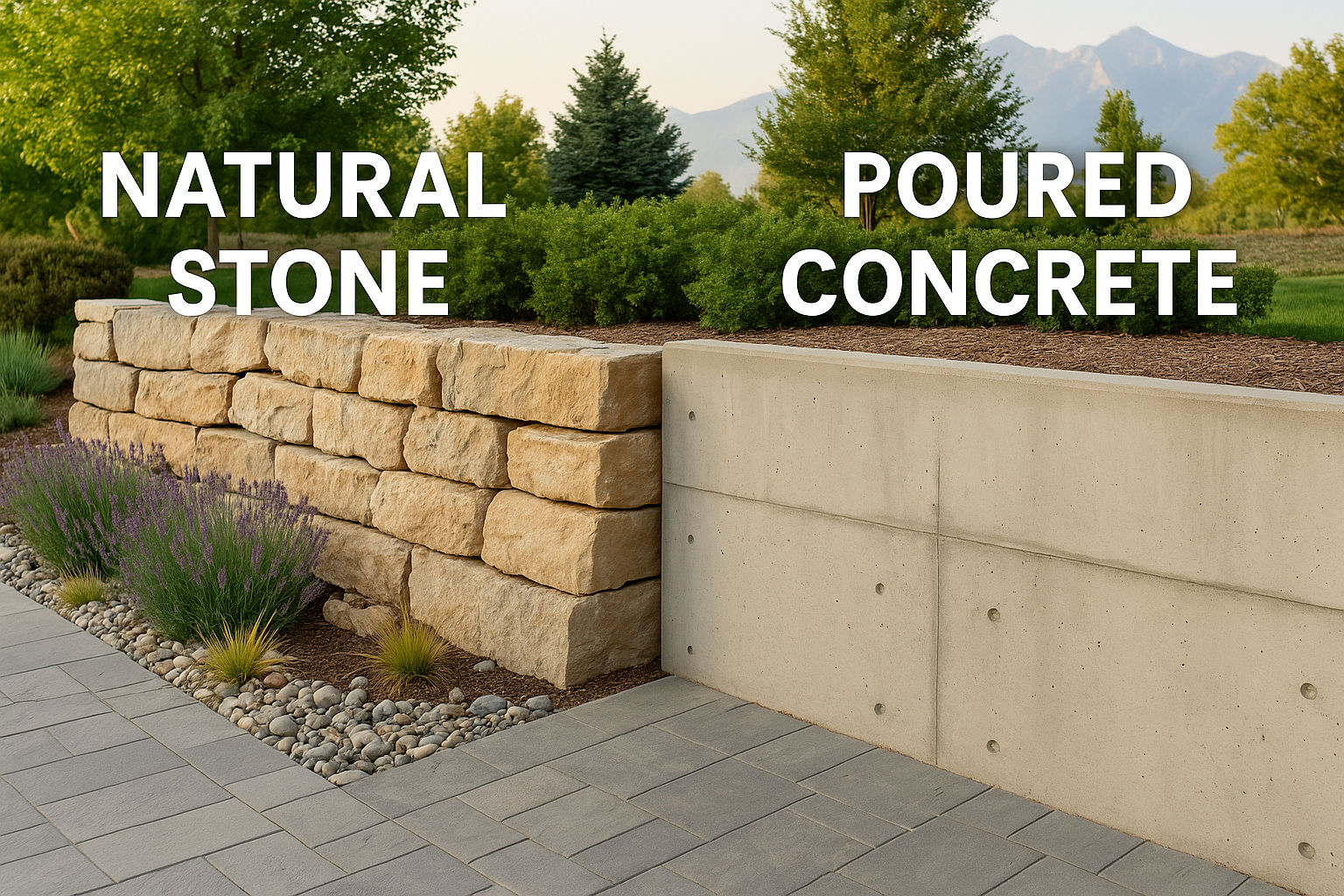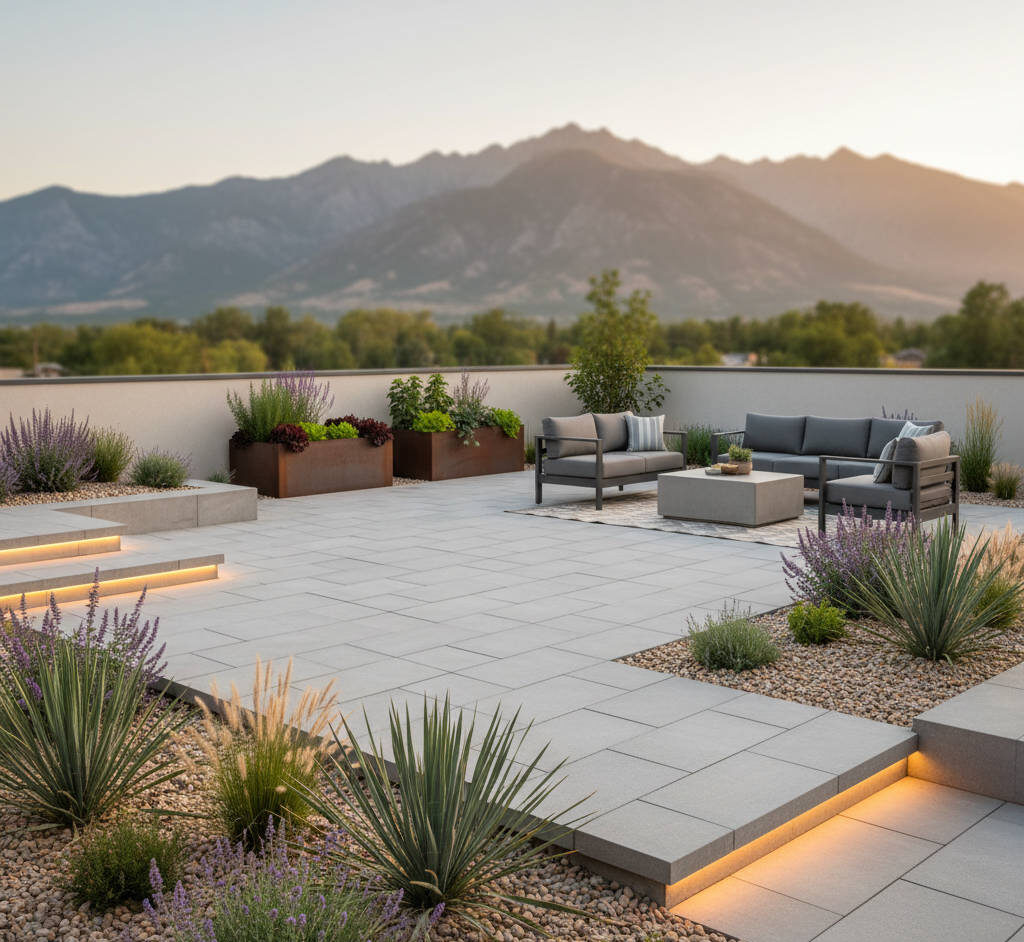Building for Utah’s Seasons Starts with the Right Retaining Wall Material
If you live in Salt Lake City, you know how quickly temperatures can shift. Sunny mornings give way to freezing nights, and that constant freeze-thaw cycle wreaks havoc on outdoor structures—especially retaining walls.
Whether you’re updating a sloped yard or stabilizing soil around your home, choosing the right material can make the difference between a wall that lasts decades and one that cracks after just a few winters.
In this post, we’ll compare natural stone vs. poured concrete to help you choose the most durable option for Utah’s harsh winter conditions.
Why Freeze-Thaw Durability Matters in Salt Lake City
Before we dive into the materials, let’s talk about what really causes wall damage in Utah:
- Water infiltration: Water enters small cracks and expands when it freezes
- Daily temperature swings: High-altitude weather brings rapid changes from sun to snow
- Soil movement: Waterlogged or frozen soil shifts and pushes against walls
- Repeated stress: Freeze-thaw expansion and contraction weakens structural integrity
Your retaining wall needs to be more than beautiful—it must withstand years of freeze-thaw pressure, which is why material choice is critical in the Salt Lake Valley.
Natural Stone Retaining Walls: Rustic Strength with Flexibility
Natural stone is often praised for its timeless appearance and versatility, but how does it perform against Utah’s winter challenges?
Pros of Natural Stone Walls in Utah
- Excellent drainage: Dry-stacked or loosely mortared stone allows water to pass through, reducing freeze-pressure buildup
- Long-term durability: Many types of stone like granite, limestone, and sandstone are naturally weather-resistant
- Flexible under stress: Stone walls can flex slightly with soil movement, reducing cracking
- Aesthetically pleasing: Offers a rustic or high-end look that fits both modern and traditional landscape styles
Potential Drawbacks
- Higher upfront cost for premium stones and skilled installation
- Labor-intensive installation compared to concrete forms
- Inconsistent material sizes can lead to gaps or weaker spots without expert placement
Still, for homeowners seeking a long-lasting, natural look, stone is often the better bet for freeze-thaw retaining wall durability in Utah.
Poured Concrete Walls: Sleek & Strong—But With Limits
Poured concrete offers clean lines and structural strength, often used in modern designs. But it comes with tradeoffs, especially in a freeze-thaw environment.
Pros of Poured Concrete Retaining Walls
- Custom shapes and finishes (smooth, stamped, or stained for visual appeal)
- High compressive strength for large-scale soil retention
- Faster to install once forms are set
- Ideal for modern or minimalist designs
Common Issues in Freeze-Thaw Conditions
- Poor drainage can trap water behind or inside the wall, leading to cracks
- Surface cracking from expansion of water and temperature cycling
- Needs sealants and weep holes to help mitigate moisture buildup
- Difficult to repair—patches are often visible and don’t last long-term
While concrete is strong, it can become brittle over time unless reinforced and properly drained, especially in Salt Lake City winters.
Comparing Freeze-Thaw Performance in Utah
| Feature | Natural Stone | Poured Concrete |
|---|---|---|
| Freeze-thaw resistance | High (especially dry-stacked) | Moderate (requires drainage) |
| Aesthetic longevity | Improves with age | May show cracks, discoloration |
| Installation complexity | High (needs skilled mason) | Moderate (form and pour) |
| Drainage capacity | Natural drainage through gaps | Requires design additions |
| Repairability | Replace individual stones | Repair often visible |
Winner for Freeze-Thaw Durability:
✅ Natural Stone (especially dry-stacked or loosely mortared walls)
Which Material is Best for Salt Lake City Homeowners?
If your top concern is long-term durability through harsh Utah winters, natural stone—especially when dry-stacked or properly drained—is the better option for most residential landscapes.
That said, poured concrete can still be a great fit if:
- You prefer a modern aesthetic
- You’re working with a tight construction timeline
- You install proper drainage systems and sealants
The key is to work with a landscape design team that understands Salt Lake City’s weather, soil types, and slope challenges.
FAQs: Utah Retaining Wall Materials & Freeze-Thaw Survival
Q: Will my poured concrete wall crack during winter?
A: It can if not properly drained and sealed. Adding weep holes and sealants is critical in Utah’s freeze-thaw cycle.
Q: Is natural stone more expensive than concrete?
A: Yes, upfront—but it may last longer and require less maintenance over time, saving money long-term.
Q: Can I repair a cracked retaining wall?
A: Stone is easier to repair than concrete. With concrete, cracks are often visible even after patching.
Q: What’s the best stone for a retaining wall in Utah?
A: Granite, limestone, and sandstone are all excellent options for Salt Lake City weather.

Let’s Build a Retaining Wall That Lasts
At Millburn Lawn & Landscape, we specialize in designing and building retaining walls that don’t just look great—they stand the test of Utah’s seasons.
Whether you’re leaning toward natural stone or concrete, we’ll recommend the best solution for your property’s slope, soil, and sun exposure.
Explore Our Landscape Design Services
Proudly serving Salt Lake City and surrounding Wasatch Front communities
Call us today for a free retaining wall consultation



